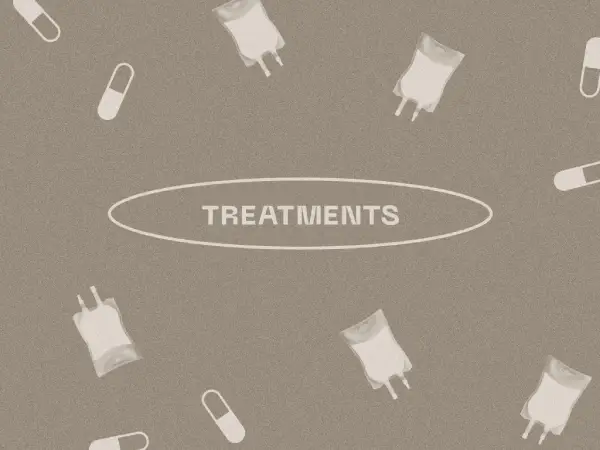Blog
Mold Toxicity- Why This May Be The Culprit Of Your Symptoms

Mold toxicity can be the unsuspecting cause of a variety of symptoms that include fatigue, headaches, sinusitis, nausea, temperature dysregulation, unprovoked anxiety, urinary frequency, respiratory problems, neurological symptoms, and insomnia. Commonly known as “sick building syndrome”, “mold hypersensitivity syndrome”, or simply “mold toxicity.”
Many individuals with a healthy immune system and without genetic predispositions, do not show acute reactions to mold toxicity, and may require months or years of steady exposure to exhibit symptoms that can be present within days of exposure in others. There is a very large genetic predisposition towards mold toxicity in some individuals in which the immune system has difficulty recognizing and attacking mold spores in circulation and will then have to rely on non-specific mechanisms of detoxification through the liver, gallbladder, kidneys, and by sweating regularly.
What Are Molds?
Molds are fungal species that develop and thrive throughout a wide range of climates and are a natural part of our environment. However, when there is water damage that occurs in a building, mold begins to grow in large quantities, and many of these species of mold that are associated with water damaged buildings happen to be more pathogenic to humans. There are 26 distinct species of molds commonly found in water damaged buildings, belonging to 11 distinct genera; Aspergillus, Aureobasidium, Chaetomium, Cladosporium, Eurotium, Paecilomyces, Penicillium, Scopulariopsis, Stachybotrys, Trichoderma, and Wallemia.
Molds growing in the home are usually found in water damaged areas. The more likely or common areas of water damage include: bathrooms, kitchen cabinets, infrequently cleaned or used storage spaces, inside HVAC units, basements, crawl spaces, areas in which flooding or water leakage have been present, and foods. They can have a musty or earthy smell and can grow in areas that may not be readily detected.
What Causes Mold Toxicity?
Mold spores are incredibly small, measuring between 0.1-20 microns, or roughly the same size as many bacterial species. When these spores are inhaled or ingested, a variety of interlinked symptoms begin to develop, and may worsen with prolonged exposure to molds. New or worsening allergic and asmthatic symptoms can be possible in those susceptible, patients with preexisting allergies and/or prone to overproduction of histamine, as the immune system reacts to the presence of mold spores.
Mycotoxins are secondary metabolites that are produced by molds to break down organic substances. Some mycotoxins are known to cause disease and death in humans and animals.
Mold spores can easily enter our systems through either the gastrointestinal tract, by eating moldy foods or foods known to contain large quantities of mold spores, or through the respiratory tract as the mold spores can be inhaled when they are in the environment. It is therefore very important to avoid mycotoxin rich foods, while simultaneously ensuring that the home/work environments are free of mold. While mycotoxins cause immediate immune reactions, mold spores can begin colonizing internally, most commonly in the sinus passages, or simply release mycotoxins as they remain in circulation.
Mold Toxicity Symptoms and Diagnosis:
Mold toxicity affects individuals differently and this effect is largely dependent on the individual’s immune system and genetic predispositions. This is further complicated by the fact that symptoms of mold toxicity can be quite variable and can vary in intensity. It is therefore possible for individuals living in the same home to experience different symptoms and experience variable timetables for symptom progression.
Mold toxicity can be diagnosed through several different means. Urine mycotoxin testing can be conducted in which the patient provides a urine sample, which is then sent to a laboratory for assessment of the mycotoxin load, the harmful substances released by mold/mold spores, as they are detoxified through the kidneys and excreted through urination. This provides information as to which specific mycotoxins are in circulation and from which species these mycotoxins have been released from, as mycotoxins are somewhat unique to specific mold genera. Another method for diagnosis comes in the form of laboratory blood testing for the immune system and hormonal response to the mold, rather than testing for the mycotoxins themselves. This is useful in conjunction with urine mycotoxin testing as it quantifies the impact of the mold on the individual and allows progress to be tracked alongside symptom changes. The blood testing for mold is multifaceted and will include markers such as: Vaso Endothelial Growth Factor, Vasointestinal Peptide, Complement factors, hormones such as estrogens and testosterone, markers for adrenal function, antidiuretic hormone, and melatonin. In addition, HLA haplotyping can be conducted through blood testing in order to assess for genetic predisposition to mold and can help guide treatment duration. These markers, aside from the genetic testing which will remain constant, would then be periodically retested throughout treatment in order to track progress.
Allergies and Mold Exposure:
Individuals with a history of allergies and/or asthma may experience worsening asthma and allergies with mold exposure. This may present with a few or all of the following symptoms: sneezing, coughing, wheezing, runny nose, mucus production, itchy eyes, watery eyes, rashes, sinus pressure, brain fog, and fatigue.
Prolonged mold exposure can cause or worsen what is known as mast cell degranulation, in which the release of allergic mediators histamine, serotonin, and inflammatory cytokines among other signaling molecules, are released from cells in response to allergic stimuli. This release can cause systemic allergic symptoms as mentioned above, and can even begin to cause newly acquired or worsening food sensitivities and intolerances. When this system becomes overtaxed from prolonged exposure to allergic stimuli, it is classified as mast cell activation syndrome.
Chronic Mold Toxicity:
Mold exposure can create a constellation of symptoms that can become more pronounced the longer the individual is exposed to mold. Therefore the first step in the treatment of chronic mold toxicity is the removal of mold from the environment as well as the avoidance of foods known to contain high concentrations of mold spores. Chronic mold toxicity can include many diverse symptoms including: fatigue, headaches, sinusitis, nausea, brain fog, temperature dysregulation, unprovoked anxiety, urinary frequency, wheezing, coughing, neurological symptoms, and insomnia.
How to Treat and Prevent Mold Toxicity:
The first step in treating mold toxicity is verification that mold exposure is indeed the underlying cause of the patient’s symptoms. This can be conducted through the use of laboratory testing as well as mold detection in the home.
The most accurate method for the detection of mold in the home or workplace is the use of ERMI (Environmental Relative Moldiness Index) testing. ERMI testing is a far more accurate methodology for assessment of molds in a given area when compared to traditional spore counting methodologies. This is because ERMI testing assess a sample from the suspected area with DNA testing for the presence of all group I (molds associated with water damaged buildings) and group II molds (commonly found molds in the environment) and provides an overall score comparing the moldiness of the provided sample relative to the average household. This data can then be used to conduct thorough remediation of an area to ensure the complete removal of mold.
Another functional method for testing the effects of mold on an individual is the VCS (Visual Contrast Sensitivity) test. This is an online test that can measure an individual’s ability to visualize details, patterns, objects, and shapes in an image at low contrast levels. The testing is graded on a pass/fail grading rubric. Failure indicates a neurological causation of dysfunction of the visual system, which can be indicative of many underlying etiologies including: mold and mycotoxin exposure, nutritional deficiencies, neurotoxin/biotoxin exposure, heavy metal toxicity, lyme disease/lyme coinfections.
Treatment is multifactorial and dependent on the individual’s presentation, but will generally include supplementation, medications, and/or IV treatments that will aid in removing mold spores from the system, supporting liver/gallbladder function, addressing hormonal imbalances created by mold exposure, strict dietary adherence to a mold free diet, lifestyle factors including regular sweating, binding agents to bind and remove mold spores, antioxidants to neutralize mycotoxins, neurotransmitter support when necessary, histamine/mast cell support, and addressing any nutrient deficiencies that may be present.


